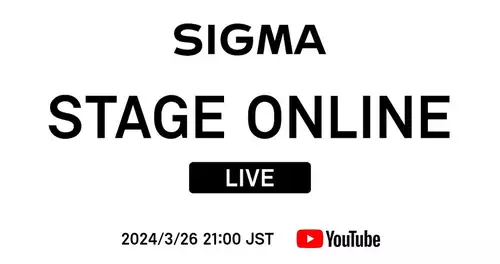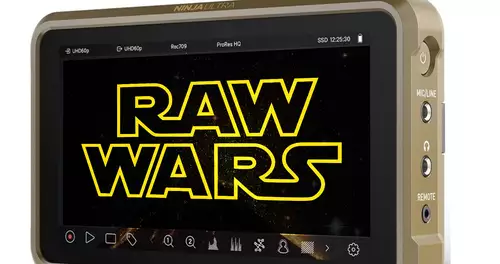Frage von Hilbert86:
Hi people
s.experementieren'm awake with my 707 and you just wanted to ask you how the best depth of field hinbekommt in pictures? I know that no EOS DSRL but a little depth of field is indeed possible thanks to focus ring. Have you ever do that in the photos-tested, if so how they achieved good results?
Regards
Hilbert
Antwort von Wechiii:

It's called depth of field;)
Antwort von Hilbert86:

I am a Turk, I may;)
Antwort von deti:

... Depth of field or depth of field: You want but the opposite, ie a "low" was always synonymous. I am a foreigner, almost everywhere. I may synonymous.
Deti
Antwort von Wechiii:
 ... Depth of field or depth of field: You want but the opposite, ie a "low" was always synonymous. I am a foreigner, almost everywhere. I may synonymous.
... Depth of field or depth of field: You want but the opposite, ie a "low" was always synonymous. I am a foreigner, almost everywhere. I may synonymous.
Deti I only said depth of field that much or little (what he wants) to be, I never claimed;)
Antwort von Bernd E.:

In practice, there's only experiment, but basically you get a shallow depth of field, if
1st the aperture is wide open and
2nd the Focal as large as possible (Tele).
For focus shifts, it is still advantageous if the two levels are far apart and the front camera is quite close s.der.
Antwort von Blackeagle123:
 s.experementieren'm awake with my 707
s.experementieren'm awake with my 707 With what movie or photographing you there? Well, no preference ;-)
So depth of field you get by 3 things
1) Aperture as wide as possible. Test: Make a pen with a small hole in a sheet of paper and look at your fingers in about 20cm away. The background is made sharp. Take away the paper: The background is blurred at a time. Just the same when Stillimage. If you can not adjust the Aperture manual, or is it too bright out there? Then it often helps to use a ND filter. The leaves less light into the camera and must therefore open the Aperture next. Just do not use too much ND, otherwise the Picture synonymous with fully open aperture too dark ;-)
2) Optical Zoom ". Because you changed the Focal top (which you say "zoom" have purely optical), then you have a much smaller depth of field. With a wide angle lens of 20mm you will have a significantly higher focal than with a 700mm telephoto lens! Do you always show the same object, but you will have a telephoto lens substantially less background.
3) chip size, the only thing that can not affect you. The larger the chip, the lower the depth of field. Among other things, this is an important factor in the whole DSLR (digital SLR cameras, directly translated "Digital Single Lens Reflex).
If you want to enhance the impression of depth of field, you let close before the camera a few objects that are blurred. These can be for example a branch, a bottle, a few blades of grass etc.
Greetings!
Constantin
Antwort von Hilbert86:

@ Constantin SD707
because it's a camcorder and DSLR keien was now really out of my page a specific question about the SD707 Pana as it has a focus ring so I wanted to know how to get s.besten shallow depth of field so that it at least looks a bit like a DSLR .
Antwort von Blackeagle123:

Much of the information you had even synonymous to google!
Here's an amusing thought experiment (Quote of http://www.rene-grothmann.de/Fotografie/Schaerfentiefe.html):
Suppose you could double the size of the world. So both the camera, including sensor, optics, aperture, as synonymous, the objects including their distances of the camera. Infinity is infinity, of course. Now we make twice the same recording (of course we have to double the distance on the sharp, where our object is twice as big zoom), but in the same paper size. Then exactly the same picture arises in both worlds. Note that the exposure would be equal synonymous. Although the aperture would be twice as large, so four times as fast, but the sensor surface would rise so synonymous fourfold. The Focal would be doubled, the f-number would remain the same, for it is the ratio of aperture to focal. The range of depth of field is twice as large, but this looks exactly like in our picture, since all objects are synonymous twice as far away.
What we learn from this?
Once we build the sensor into the larger world of the smaller one, and take synonymous same object size, so that the object again displayed format. We must then but the smaller sensor image twice as big zoom! Thus the blur circles are twice as large. What follows, then? On the one hand the depth of our object is to double the size, the other by the larger blur circle smaller again. This balances out about. The depth remains about the same, if the same object format-with different focal lengths will be photographed. But at infinity, we get twice as large blur circles! This means that the background of the object is considerably more blurred in uncertainty, and the object appears to exempt much more beautiful. Note that one would have to double for the same effect of the aperture. Moreover, while the depth of field would fall around the object. For highlighting so it is easier (and cheaper synonymous) to increase the focal than the aperture.
We can still learn something from this experiment. The larger world corresponds namely the transition of compact camera to DSLR, so twice as large sensor size (in reality we have to triple the world). If we are to infinity in both worlds are sharp, the depth of field begins in the larger world in the double distance. An object at the same distance appear blurred on the SLR. This means that compact cameras have a much greater depth than SLRs.
This is synonymous, if one with two cameras to provide sharp 10m. To see this, let us consider that the camera would have twice as much twice as large as the depth of field at 20m in small 10m. But of 20m to 10m increases the depth of field from disproportionately, as mentioned above (which may, I think, justified only by the formulas). The depth decreases so at less than half, and thus to a smaller area than the compact camera. More info found at:
http://www.rene-grothmann.de/Fotografie/Schaerfentiefe.html
A collection of links for depth of field:
http://de.mimi.hu/fotografie/schaerfentiefe.html
Greetings!
Antwort von Bernd E.:
 ... With a wide angle lens of 20mm you will have a significantly higher focal than with a 700mm telephoto lens ...
... With a wide angle lens of 20mm you will have a significantly higher focal than with a 700mm telephoto lens ... While it is clear what you mean, but to our young drivers to not get confused: Instead of "Focal"'s is called "depth".
Antwort von Paul*Berlin:

I need to hang out again leave the smart ass
(sorry, I can not help on the radio was already synonymous of such as abused;)). The sd707 could, just as with the previous models, just as much depth of field (achieve at the same aperture and focal course), as with unit one identical in Optics and sensor, that would be waived only to the focus ring (for the sd707 that I think the sd66). The focus ring helps only a very one) it sharp on the correct object and 2) during the shoot to realize sharpness rides.
Best wishes, Paul the Korinthenkacker
Antwort von stefanf:

After so all terms are settled, surprised me has been the only one a really good answer.
Nuja, I'll try again without the synonymous valued index finger.
1st Aperture veeery on.
2nd Exposure time with the correct brightness fit.
3rd Ratio of background to object should be considerably larger than selected entities to Camera. The more the better jet.
Have fun testing.
Antwort von srone:
 After so all terms are settled, surprised me has been the only one a really good answer.
After so all terms are settled, surprised me has been the only one a really good answer.
Nuja, I'll try again without the synonymous valued index finger.
1st Aperture veeery on.
2nd Exposure time with the correct brightness fit.
3rd Ratio of background to object should be considerably larger than selected entities to Camera. The more the better jet.
Have fun testing. if second by nd-filter, or (negative) gain replaced, that gets really good.
exposure time should remain 1/50tel.
lg
SRone
Antwort von B.DeKid:
 ....
....
2nd Exposure time with the correct brightness fit.
...... I wrote this morning in the DSLR forum
Re: Aperture + video?
-------------------------------------------------- ------------------------------
Aperture is on video and in photo actually synonymous (now times the difference between chip size and film regarded as not relevant)
Aperture closed - large numbers - a lot of depth of field - little Bokeh
Aperture open - small number - less depth of field - a lot of Bokeh
f 8 -11 is an Optimum Aperture for film / video - we can thus claim by rule of thumb.
Everything about it or under it - is specific to select the effect.
If so everything as usual.
When carrying VDSLR Cams not a problem that is - for pure video cameras must be addressed regarding how the (recording) chip sections.
In essence, however, synonymous here all the same - that is, small, exposed area is greater depth of field - larger area of less depth of field.
MfG
B. DeKid So the little disclaimer - the exposure time is actually the same for video
25fps standard are 1 / 50, in bad light and static objects like synonymous sometimes only 1 / 25, in good light and fast moving objects hundredth .... everything else leads to Motion BluRings Unschärfeen and can therefore move only in certain objects / pictures to be used or should only be used.
Exposure to video regulates only by either Aperture or even in most cases by ND filters - whether its built-in ND filters Cam has but I do not know.
................
The distance to the object and background is responsible for a certain play or Bokeh for example, when Keyen (green screen) play a role.
The response of Bernd was good - because basically no one can with 35mm adapter Ner Video Cam only by long distance to the object and Focal (Tele) to reach a depth of gerienge.
Say what I am today with simple nervous VDSLR and NEM on 50mm f second 4 ND 2 disc set with nervous before - from Ner reach distance of 2 m, ie s.der XL1s as I go about 5-7 meters back and have the Aperture as much as possible and must be fully oeffnen must zoom in
That may well made synonymous but the effect is sometimes not so fine as adjustable as with 35 mm adapter or just VDSLR .... based on 2 people in the park is so scan but still in his room as a chessboard with the video camera is already borderline.
MfG
B. DeKid
Note there are still film the difference that a T has not Stop and F Stop, Fiehl me just one.
Antwort von iMac27_edmedia:

, the DoF of the 707 looks quite good, with the focus ring you with making the action very good focus shifts (in manual mode), also supports one of the focus Assistfunktion as the exposure histogram (as known from the professional Panasonich AVCIntra-cam) , then to use Aperture much, much light and the optical telephoto. The image stabilization or better, a tripod or other support surface are recommended as much.
Even in dark interiors are from the 707 a good Picture.









